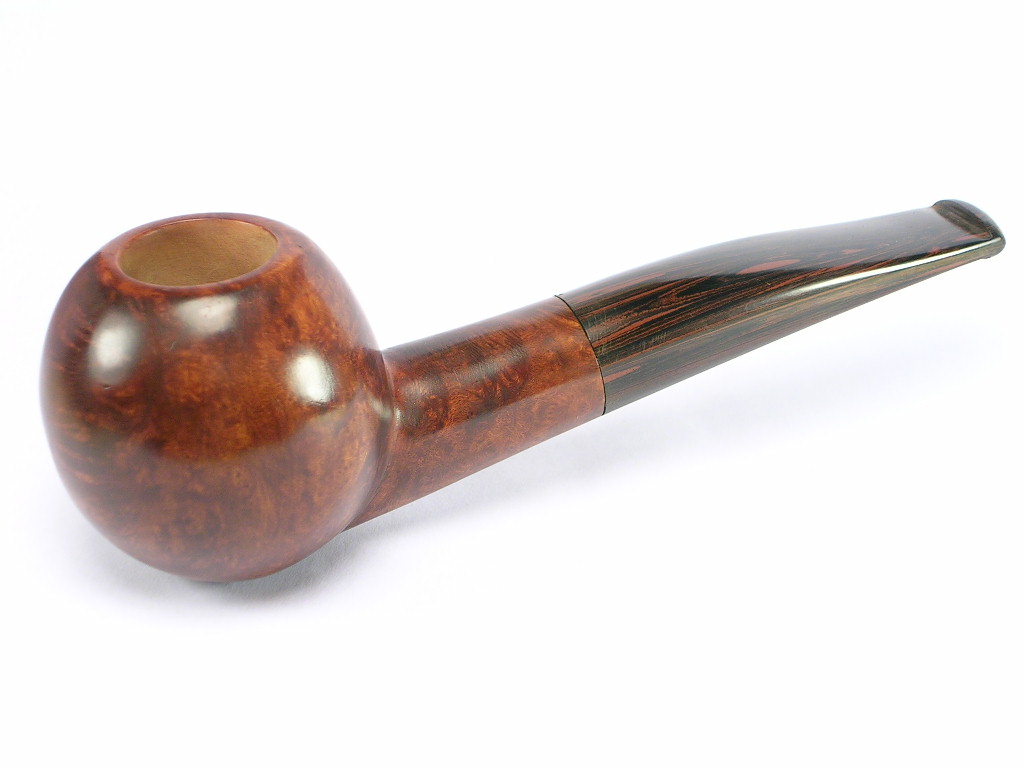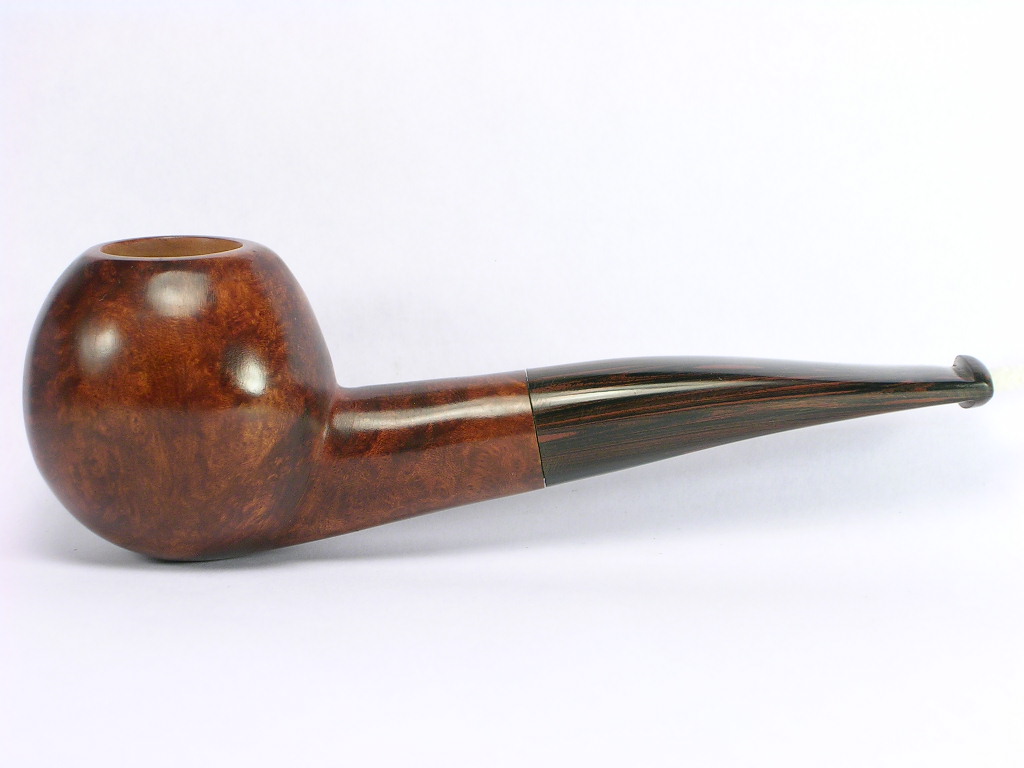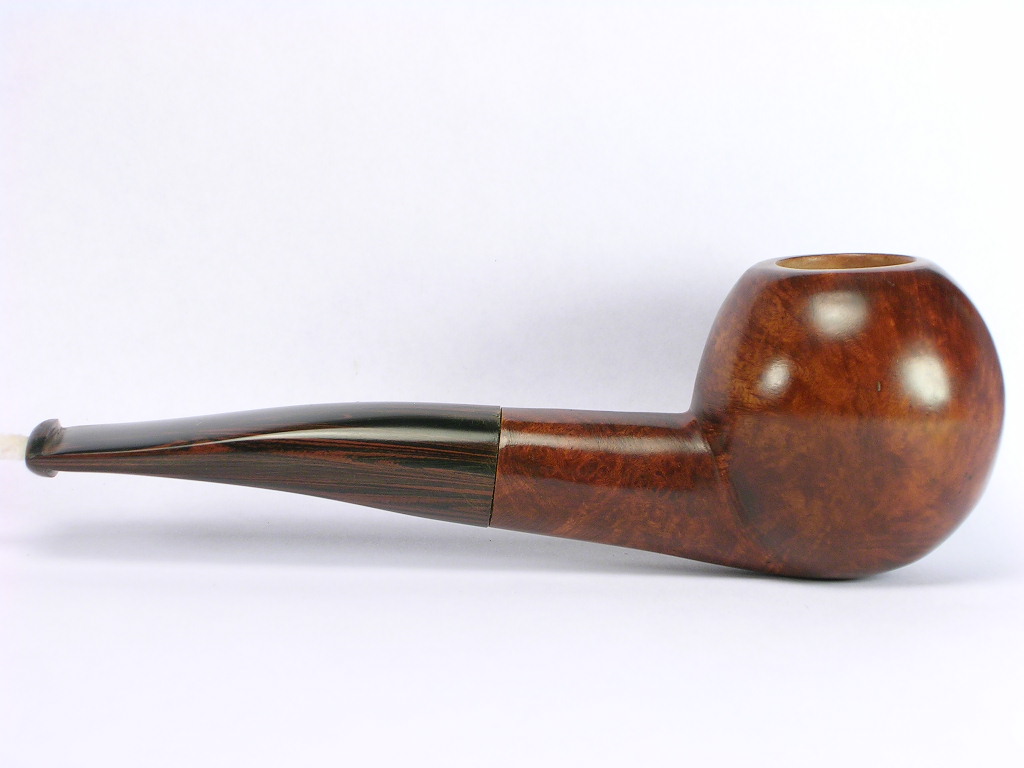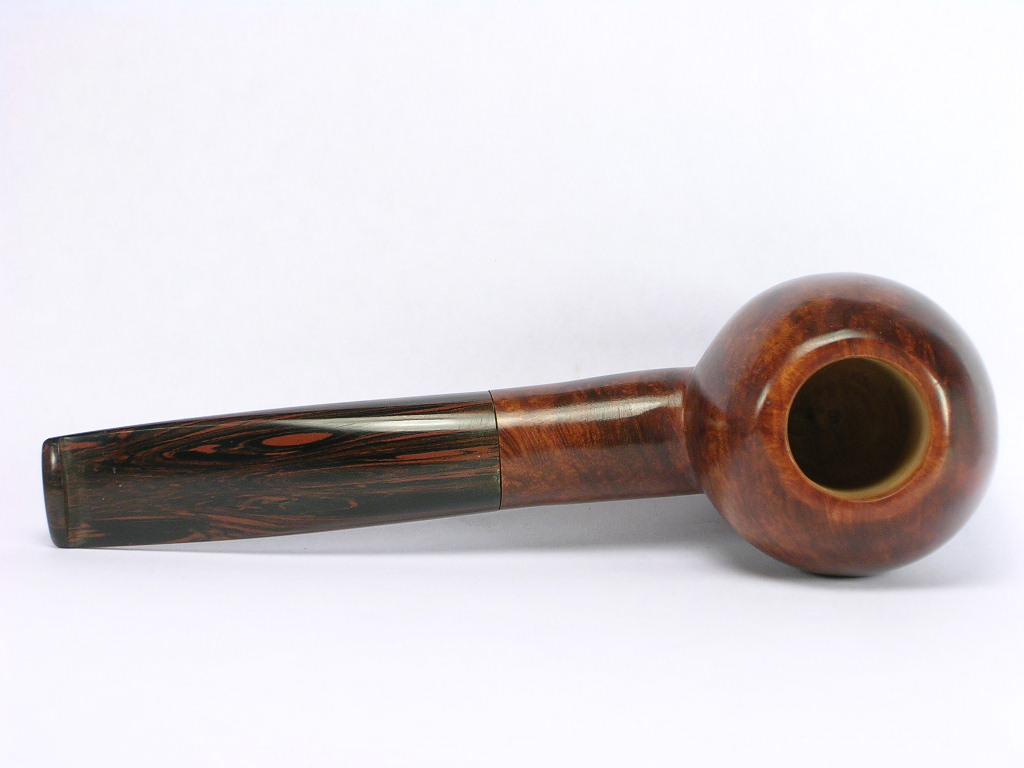Thanks for the replies.
I am a beginning pipe maker myself but a long time furniture maker and finisher, so, take my comments with that in mind. As Bruce already pointed out, there are some sanding marks you need to get rid of. What is your method for shaping/sanding? What's the highest grit you are using and are you using methods to make your finishing work easier (wet sanding)? As a furniture maker/restorer I've learned to use methods that allow me to work smarter (not harder), especially when it comes to finishing. At first, this requires you to sometimes work longer as, you have to make sure you follow through each step before moving on to the next (especially with sanding grits), but after awhile, you learn it's much better to "do it once and do it right."
This is certainly an area I'm struggling with right now, so if you have suggestions, I'm all ears. My current procedure is:
100, and 220 disk
220, 320, 400 dry hand sanding
stain
red tripoli
white tripoli
carnauba
for the stem I use:
320, 400, 600, 800, then white tripoli
Concerning the gap at the stem/shank junction: have you countersunk your mortise opening and/or tenon end?
I haven't countersunk the mortise. I didn't feel like it needed since I use a Delrin tenon, although I'm probably mistaken. I'll give it a try. I think lack of squareness is also a problem. I was going to try facing with a forstner bit.
-the transition between bowl and shank is too sharp, should have a bit of a radius, shouldn't be so sharp
I was working under the assumption that sharper was better. I can certainly round things off a bit in the future.
-selling pipes before getting the basics close to perfect is premature
I actually agree with this, and although I wouldn't call what I do "close to perfect", I (perhaps mistakenly) thought it "good enough". At this point, I'm not going to remove my website, since the horse is out of the barn. I'm also guessing I can learn a lot by what does or doesn't sell.
However, it looks like instead of bending the stem to get the curve, you filed the top down and not the bottom
I bent the stem, although I can see what you're saying.




